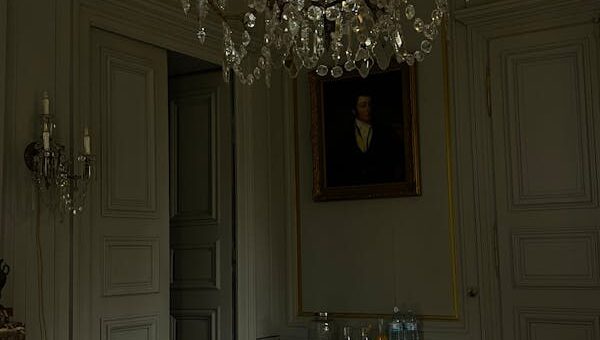
Introduction
Setting a formal dining table is an art that combines tradition, etiquette, and style. Whether you’re hosting a holiday dinner, a wedding reception, or an elegant dinner party, knowing how to set the table properly can elevate your event and impress your guests. This comprehensive guide will walk you through everything you need to know—from the basics of table settings to advanced styling tips—ensuring your table looks impeccable and inviting.
Section 1: Understanding the Basics of Formal Dining Table Settings
1.1 What Defines a Formal Dining Table?
A formal dining table setting is distinguished by its adherence to traditional etiquette, symmetrical layout, and multiple pieces of cutlery and glassware. Unlike casual or everyday table setups, a formal table setting follows a structured arrangement that aligns with the courses being served.
In a formal setting, each element has a specific placement that enhances the dining experience, making guests feel valued and comfortable. From the charger plate to the dessert fork, every item plays a role in guiding diners through a multi-course meal seamlessly.
1.2 Essential Components of a Formal Dining Table
-
Dinner Plate or Charger: The foundation of the setting, often decorated or colored to match the event’s theme. Chargers stay on the table until the main course arrives.
-
Cutlery: Multiple forks, knives, and spoons arranged according to the courses.
-
Glassware: Different glasses for water, white wine, red wine, and sometimes champagne.
-
Napkin: Placed elegantly either to the left of forks or atop the charger.
-
Bread Plate and Butter Knife: Positioned above the forks, typically on the left side.
Understanding these components is crucial before moving on to the arrangement. Proper knowledge ensures your table is both functional and aesthetically pleasing.
Section 2: Step-by-Step Guide to Setting a Formal Dining Table
2.1 Arranging the Plates and Chargers
Start with a clean, polished table. Place a charger plate at each setting; chargers add a decorative layer and define each guest’s space. On top of the charger, place the dinner plate. If serving soup or salad as the first course, add the soup bowl or salad plate on top of the dinner plate.
| Item | Placement |
|---|---|
| Charger Plate | Centered in front of the chair |
| Dinner Plate | On top of the charger |
| Soup/Salad Plate | On top of the dinner plate |
2.2 Positioning Cutlery Properly
Cutlery placement follows the “outside-in” rule. Items used first are placed farthest from the plate, moving inward for subsequent courses.
-
Forks go to the left of the plate; the salad fork is outermost, followed by the dinner fork.
-
Knives and spoons go to the right; the knife is closest to the plate with its blade facing inward, followed by spoons.
-
The dessert spoon or fork is placed horizontally above the plate.
This arrangement helps guests know which utensils to use without confusion.
2.3 Glassware Setup
Glasses are arranged on the right, above the knives.
-
Water glass is placed directly above the knife.
-
Wine glasses follow, placed slightly right and below the water glass.
-
Champagne flutes, if used, go behind the wine glasses.
This triangular arrangement creates balance and easy access.
Section 3: Styling Tips and Decorative Elements
3.1 Choosing Table Linens and Napkins
Tablecloths and runners set the tone. For formal dinners, neutral colors such as white, ivory, or subtle pastels work best. Avoid busy patterns that can distract from your tableware.
Napkins can be folded elegantly or held with napkin rings. Creative folds—such as the pocket fold or bishop’s hat—add sophistication.
3.2 Adding Centerpieces and Candles
Centerpieces should be proportional to the table size—not too tall to obstruct views. Flowers, greenery, or elegant candles provide ambiance without cluttering the table.
3.3 Incorporating Place Cards and Menus
Personalized place cards show thoughtfulness and help guests find their seats effortlessly. Menus provide clarity on the courses and can be styled to match invitations and place cards.
Section 4: Common Etiquette Rules for Formal Dining
4.1 How to Use Utensils Correctly
Remember to start using cutlery from the outside and work your way inward with each course. Rest utensils diagonally on your plate between bites to signal you are still eating, and place them parallel at the bottom right when finished.
4.2 Seating Arrangements and Hosting Tips
Traditionally, hosts sit at the head of the table. Alternate seating by gender or relationships to encourage conversation. Avoid overcrowding the table; allow at least 24 inches per guest for comfort.
Section 5: Troubleshooting and Frequently Asked Questions
5.1 What to Do If You Don’t Have Enough Cutlery?
Prioritize essential utensils. If you lack multiple forks or spoons, use versatile pieces and inform guests gently if multiple courses are planned.
5.2 How to Adjust the Setting for Different Cuisines
Adapt your tableware to suit the cuisine—Asian meals might require chopsticks alongside forks and knives. For buffet-style dinners, simplify settings to essentials.
Conclusion: Elevate Your Hosting Experience with a Perfect Formal Dining Table
Setting a formal dining table may seem daunting at first, but with practice and attention to detail, it becomes a rewarding skill that enhances any event. Remember, the goal is to create a welcoming atmosphere where guests feel valued and comfortable. By mastering the basics, adding thoughtful styling touches, and respecting etiquette, you will leave a lasting impression.
Are you ready to impress your guests at your next dinner party? Share your favorite table-setting tips or questions below—we’d love to hear your experiences and help you perfect your formal dining table setup!